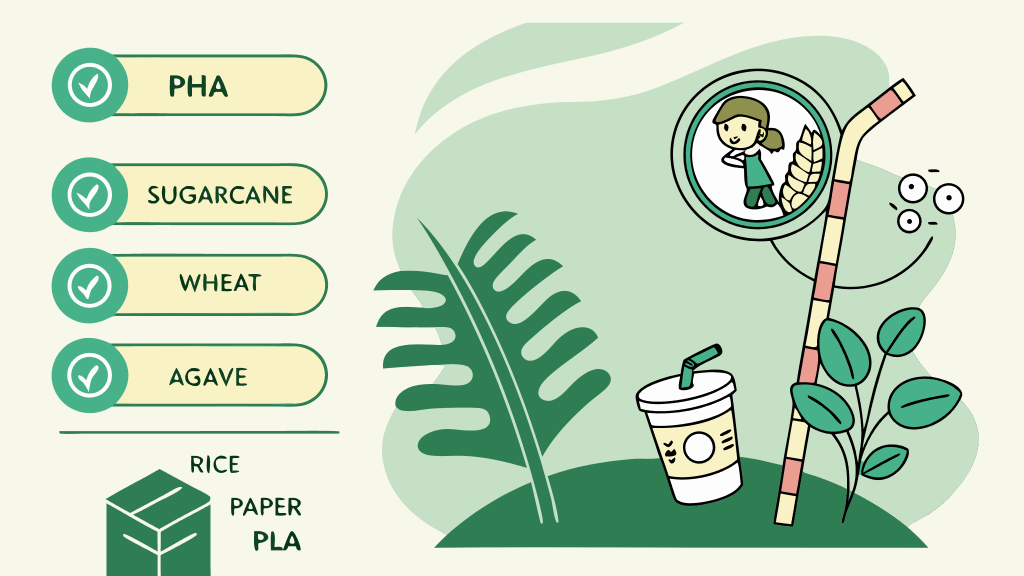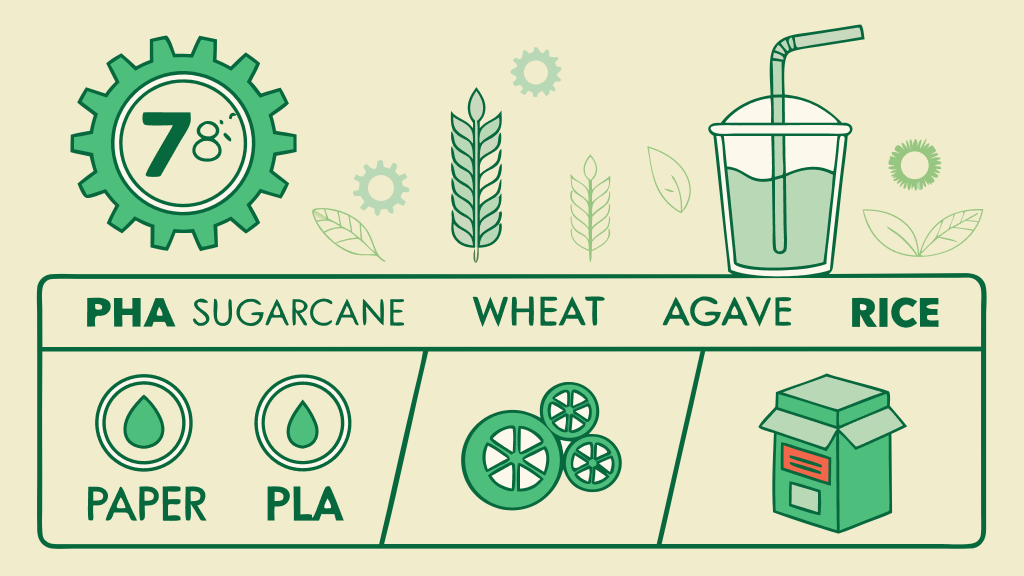
Choosing the Right Compostable Drinking Straws for Hospitality & F&B
The hospitality and F&B sectors stand at a critical juncture. The escalating global crisis of single-use plastic pollution demands immediate action, with an estimated 170 to 390 million plastic straws discarded daily in America alone, contributing significantly to landfill and ocean marine debris. This environmental imperative is no longer a distant concern but a direct challenge impacting hotels, restaurants, and cafes worldwide. Consumers are increasingly discerning, with a growing demand for sustainable practices directly influencing their purchasing decisions and fostering brand loyalty. Moreover, the regulatory landscape is rapidly tightening, evidenced by widespread plastic straw bans and restrictions in major cities across the US and countries like those within the European Union. This shift isn’t merely about compliance; it’s a strategic business opportunity for forward-thinking establishments to gain a significant competitive advantage and differentiate themselves in a conscious market.Explore how to elevate your brand with sustainable packaging solutions.

The journey towards sustainable straws hasn’t been without its hurdles. Early compostable alternatives, particularly paper straws, were often criticized for rapidly becoming soggy, impacting the customer experience and bringing back unpleasant memories of rye grass straws from the 1800s. However, modern innovations have largely addressed these “soggy straw” perceptions, with new materials and coatings significantly enhancing durability. A crucial distinction must be made between “biodegradable” and “compostable.” While biodegradable materials eventually break down, they may still require specific, sometimes unachievable, conditions to fully decompose and can leave microplastic residues. “Compostable” materials, on the other hand, are specifically designed to break down completely into nutrient-rich compost within a defined timeframe under controlled conditions, leaving no toxic residue. This distinction is vital for avoiding greenwashing and ensuring genuine environmental impact. Today, the market offers a diverse landscape of modern compostable straw materials, predominantly plant-based, each with unique properties designed to meet varied F&B demands.
Selecting the ideal compostable straw for your operation goes beyond simply choosing an eco-friendly option; it requires a strategic assessment of key performance metrics. Durability in various beverages, heat resistance for hot drinks, and neutrality of taste and odor are paramount to ensuring a consistent, positive customer experience. Crucially, validating compostability claims through reputable third-party certifications like BPI (Biodegradable Products Institute) in the US, TÜV AUSTRIA (OK compost INDUSTRIAL / OK compost HOME) in Europe, or ASTM D6400 and CMA-S, is essential for verifiable environmental impact.

Here’s a comparison of leading compostable straw materials for hospitality & F&B:
| Typ materiálu | Key Properties & Performance | Compostability & Certifications | Ideal for |
|---|---|---|---|
| PHA brčka | Mimic traditional plastic feel and durability. Resistant to sogginess and maintain integrity. Withstand temperatures up to 212°F (100°C). | Certified home compostable (approx. 1 year) and marine degradable (4-8 months). Do not produce microplastics. Often BPI certified. | All beverage types, including hot and cold; premium feel, suitable for extended use. |
| Sugarcane (Bagasse) Straws | Sturdy, durable, and resist sogginess, even after prolonged immersion (e.g., 24 hours). Withstand up to 220°F (100°C). Smooth, neutral taste and faint natural aroma. | Certified home and industrial compostable (weeks to months, e.g., 70% in 12 weeks). Often EN 13432 certified. | Cold, warm, and hot beverages; good for thicker drinks like smoothies and cocktails. |
| Wheat & Reed Straws | Naturally derived stems; do not get soggy; perform exceptionally well in both hot and cold beverages. Provide a rustic aesthetic. Gluten-free as they come from the stem, not the grain. | 100% compostable and biodegradable in land or sea. Certified commercial compostable (e.g., 42 days) and often home compostable. USDA BioPreferred Program recognized. | All beverage types, including cocktails; strong aesthetic appeal for eco-conscious branding. |
| Agave Straws | Made from upcycled agave fibers, a byproduct of tequila and agave syrup production; plastic-free and highly durable. Resist sogginess for several hours. Suitable for hot and cold beverages due to heat resistance. Generally flavor-neutral. | Biodegradable and compostable; some home-compostable versions break down quickly on land or in the ocean (e.g., 95% in 180 days in active landfill). | Hot and cold drinks; offers strong durability for extended use, excellent for high-volume settings. |
| Rice Straws | Resilient, sturdy, and tolerate hot drinks and thick liquids. Can be edible after use, offering a unique customer experience. Scentless. | Fully edible and compostable. Biodegradable in less than 90 days. | All beverage types; unique, zero-waste option; particularly popular in settings prioritizing novelty and complete disposability. |
| Papírová brčka | Cost-effective. Modern versions have undergone significant improvements in durability with plant-based coatings, lasting 2-4 hours in cold drinks and about 1 hour at room temperature. | Rapidly decompose in composting environments (2-6 weeks). Compostable, but may not biodegrade effectively in oxygen-free landfill settings. | Cold and room temperature beverages; suitable for high-volume, cost-sensitive operations where rapid consumption is common. |
| PLA brčka | Mimic the look and feel of traditional plastic straws. | Primarily require industrial composting facilities for effective breakdown; do not decompose in home composts or landfills. Low heat resistance; can deform above 113°F (45°C). | Cold drinks only, best suited for areas where industrial composting infrastructure is robust and accessible. |
Optimizing operational efficiency with eco-straws involves more than just selecting the right material. It demands a careful evaluation of your internal waste management infrastructure and local composting capabilities. For instance, in the US and Europe, the availability of industrial composting facilities varies significantly by region, as evidenced by reports on waste management infrastructure. Businesses must ensure that the chosen “compostable” straws can actually be diverted from landfills to a proper composting stream; otherwise, their environmental benefit is negated.Learn how to streamline your B2B supply chain to optimize packaging procurement.Best practices for proper storage are also crucial; PLA straws, for example, are sensitive to heat and moisture, requiring storage at 59-77°F (15-25°C) with less than 50% relative humidity to prevent warping. Conversely, natural materials like rice and wheat straws need low moisture content to prevent premature decomposition and molding. Finally, staff training and customer education are paramount in maximizing the environmental benefits and reinforcing your brand’s commitment to sustainability. Transparent communication about your eco-friendly choices can foster trust and loyalty.

Embracing the right compostable straws is not just a trend; it’s a strategic imperative that future-proofs your F&B business. This commitment to sustainability significantly enhances your brand reputation, attracting the growing segment of environmentally conscious consumers and securing a distinct competitive edge in an evolving market. The long-term benefits extend beyond improved public perception, including potential reductions in waste disposal fees and a strengthened market position aligned with global sustainability trends. Proactive sustainable sourcing is a tangible way to achieve your Environmental, Social, and Governance (ESG) goals and contribute meaningfully to a circular economy model within the hospitality industry.Discover more about achieving ESG goals in hospitality.






